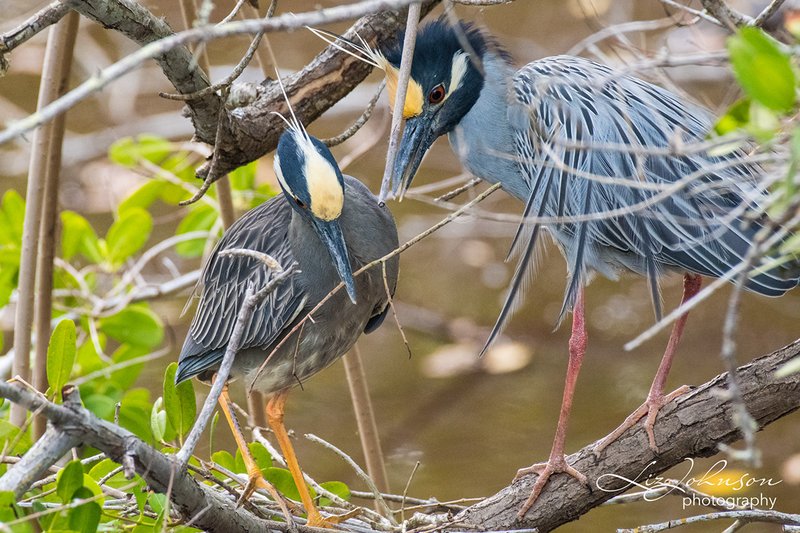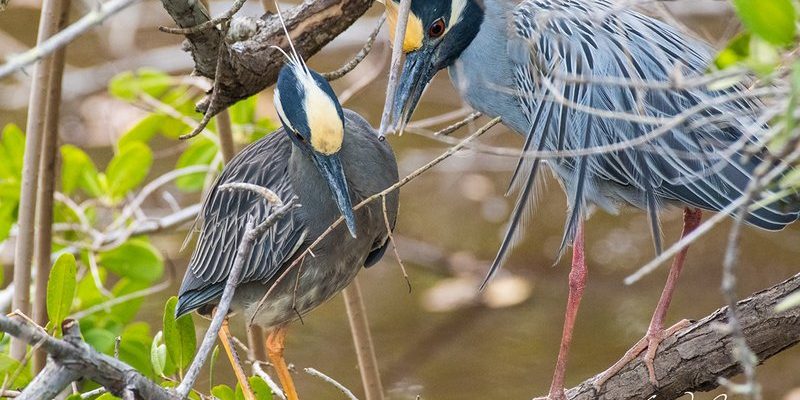
Imagine a heron as a meticulous architect, carefully selecting its building site and materials for a sturdy nest. This is just a glimpse of heron nesting habits, which involve intricate planning and community interaction. In this article, we’ll dive deeper into the world of herons, exploring their nesting practices, the lifecycle from egg to adult, and the important role they play in their ecosystems.
Understanding Heron Species
Before we get into the details of nesting habits, it’s essential to know that there are several heron species, each with its own quirks. The most common types include the Great Blue Heron, the Snowy Egret, and the Black-crowned Night Heron. Each species has adapted to its environment in unique ways, which influences where and how they nest.
The Great Blue Heron, for example, is known for its large size and striking blue-gray feathers. This heron often prefers to nest in colonies, where they can socialize and find safety in numbers. On the other hand, the Snowy Egret is smaller and features beautiful white plumage, often nesting in more secluded areas to avoid predators. Understanding these species helps us appreciate the beauty of their nesting habits.
Heron Nesting Locations
Herons are quite particular about where they set up their nests. They typically choose locations that provide safety from predators and easy access to food. Common nesting sites include:
- Tree Tops: Many herons, like the Great Blue Heron, prefer to build nests high in the trees, often in colonies. This height protects them from ground-level threats.
- Marshes: Some herons opt for marshy areas, using reeds and other vegetation to create sturdy nests. This setting offers both safety and abundant food supply.
- Man-Made Structures: Surprisingly, herons sometimes adapt to human environments. They can often be seen nesting on rooftops or other tall structures, proving their adaptability.
Choosing the right spot is crucial for the survival of their young, as it helps protect them from predators while allowing easy access to water and food.
Nesting Materials and Construction
When it comes to building their nests, herons are like skilled DIY enthusiasts. They gather a variety of materials, often found in their surroundings. Some common materials include:
- Twigs: Sturdy branches provide the foundation of the nest, creating a strong structure.
- Grass and reeds: These softer materials are used to line the nest, making it a comfortable place for eggs and chicks.
- Feathers: Some herons will even add feathers to create a cozy environment for their young.
They typically work together in colonies, allowing for a community effort in nest construction. It’s fascinating to watch these birds interact and collaborate, making their nesting process feel almost communal.
Heron Eggs and Incubation
Once the nest is built, it’s time for the real magic to happen—laying eggs! Herons usually lay between 2 to 6 eggs, depending on the species. These eggs are typically blue or greenish and blend perfectly with the surroundings, helping to camouflage them from predators.
Now, let’s talk about incubation. Both parents usually share the responsibility of keeping the eggs warm. This process can take about 25 to 30 days. During this time, they take turns sitting on the eggs, ensuring that they remain in a cozy environment. Here’s a fun fact: while one parent incubates, the other often retrieves food to keep their energy up. It’s all about teamwork!
The Heron Lifecycle: From Egg to Adult
After the incubation period, it’s time for the chicks to hatch. Newborn herons are altricial, meaning they are born helpless and require care from their parents. Initially, they are covered in down feathers and completely dependent on their parents for food and protection.
As they grow, heron chicks develop quickly, showing remarkable transformations in just a few weeks. They start to gain feathers and become more independent. By the time they’re about 2 to 3 months old, they’re ready to take their first flights. It’s a thrilling moment, watching them stretch their wings and practice flapping around the nest.
Once they reach maturity at about 1 year, young herons usually leave their families to find their own territories. This journey is essential for their survival, as it allows them to establish their homes and find mates.
The Role of Herons in the Ecosystem
Herons aren’t just beautiful to watch; they play an essential role in their ecosystems. As both predators and prey, they are part of a delicate balance. They help control fish populations, which can prevent overpopulation in their habitats. By feeding on fish, amphibians, and small mammals, they contribute to maintaining healthy ecosystems.
Moreover, herons also serve as indicators of environmental health. A decline in their population might signal problems like pollution or habitat loss. By protecting herons and their habitats, we help ensure a healthy ecosystem for many other species as well.
Conservation and Protection Efforts
Given the vital role herons play in their environments, various conservation efforts are underway to protect them. Organizations often work to preserve wetlands and natural habitats, which are crucial for the survival of herons and other wildlife.
Additionally, educating local communities about the importance of protecting these beautiful birds and their environments can lead to positive changes. Simple actions like reducing pollution and promoting sustainable practices can go a long way in safeguarding heron populations.
Final Thoughts on Heron Nesting Habits and Lifecycle
Heron nesting habits and their lifecycle are nothing short of fascinating. Whether you’re a birdwatcher or just someone curious about nature, understanding these birds gives you a deeper appreciation for the natural world. From their careful nesting practices to their crucial role in the ecosystem, herons remind us of the intricate connections that bind wildlife and their habitats.
So next time you spot a heron, take a moment to think about its journey—from selecting the perfect nest site to raising its young. Each step in their lifecycle reflects a story of resilience and adaptation, highlighting the beauty of nature right in front of us.

